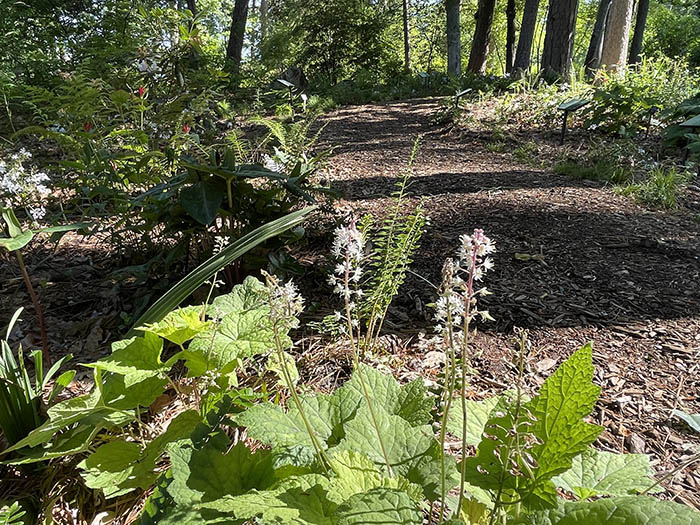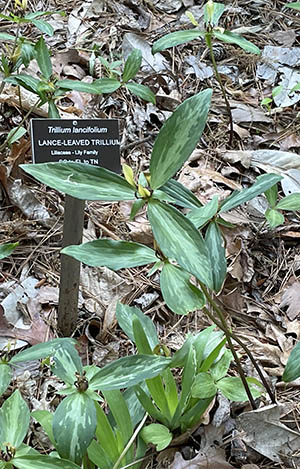Garden Talk

The Blomquist Garden, Rare Plants and Dogs
By Annabel Renwick
Curator of the Blomquist Garden of Native Plants
Many visitors are aware that dog walking is permitted in Sarah P. Duke Gardens before 10 a.m. and after 5 p.m. It’s often a surprise for dog walkers to learn that the Blomquist Garden of Native Plants is an area where dogs, with the exception of service animals, are not permitted at any time. As the curator of the native plant garden, I would like to take this opportunity to explain why dogs are not allowed in this section of Duke Gardens.

The Blomquist Garden of Native Plants contains a botanical collection representing plants from the Southeastern U.S. Around 15% (150 species) of the plants in the Blomquist are endangered, with several of these specimens recognized as “Federally Endangered.” A further 35% (350 plant species) of the plants in the collection are classified as rare or uncommon, hence around half of the plant species in the Blomquist Garden are of conservation concern. At Duke Gardens, we have an ethical and sometimes a legal responsibility to protect and conserve these rare and endangered species, which is especially pertinent in the context of climate change and loss of biodiversity.
It is important for visitors and dogs to stay on the paths in all garden areas, but the Blomquist is especially vulnerable to dogs for a variety of reasons. The paths are narrow, which easily allows leashed dogs to step into plantings and damage plants with their foot traffic. Another problem is dog urine, which can be fatal to plants. This is of greatest concern with irreplaceable rare plants. And dog urine is a marker for other dogs to urinate on the same spot, which could result in the death of multiple plants in that location.
Not only is the Blomquist Garden a haven to endangered plant species, but it is a wildlife garden. We have many animals in the Blomquist, including birds, bats, flying squirrels, raccoons, foxes, rabbits, chipmunks and opossums, as well as many amphibians and reptiles. We want to maintain these 7 acres as a wildlife habitat, allowing visitors to observe these animals, for school groups to study wildlife, and for university students to carry out research.
The least pleasant experience with dogs, not just in the Blomquist Garden, is from irresponsible owners who do not clean up after their pets. Dog droppings are left to horticultural staff to clean up, hopefully before some unfortunate visitor steps in it or a volunteer discovers it while weeding. This health and safety issue is one of the reasons that dogs are also not allowed in the Charlotte Brody Discovery Garden, where vegetables, herbs and fruits are grown for human consumption, and the chickens would not appreciate the presence of dogs.
Overall, the majority of dog walkers at Duke Gardens are responsible and walk their dogs in a respectful manner, adhering to the specified dog-walking hours and areas. We hope that articles such as this will help increase people’s understanding of the importance of creating a safe haven for plants and wildlife, where all visitors can appreciate and enjoy horticultural excellence with or without a dog.
Photos from top: The Blomquist Garden is home to 27 species of trillium, many rare and endangered; photos by Annabel Renwick. A chicken in the Discovery Garden; photo by Sue Lannon.





